Web
and Book design, Copyright, Kellscraft Studio 1999-2008 (Return to Web Text-ures) |  (HOME) |
THE TREES OF
MAINE WE suspect that
when Maine was called the Pine Tree State, the word pine was made to do
duty in
a general way for evergreens. we know that much furniture, said to be
pine, is
often spruce or cedar in parts. There is a loose manner of thinking of
all
evergreens when wrought into lumber, as pine. whatever may once have
been the
case, we very much doubt whether the pine is now the predominant tree
of Maine.
A lady of some discrimination declared to the writer that she journeyed
over
two hundred miles in Maine without seeing a pine from her car window.
We wonder
whether she might not have taken at least a few naps. A surprise,
however,
awaits the traveler who supposes that he is about to drive through
interminable
pine forests. The spruce is very much in evidence, fir is common,
hackmatack
usual, and hemlock more than common. Perhaps a pine,
at
its best estate, is the most picturesque of trees, but it is seldom
that great
pines are symmetrical. The gnarled growth of a pine may be more
picturesque,
but it is a question whether the pure beauty of a perfect cone is not
more
attractive. while it is doubtless true that the pine was culled out
near the
shore, it probably was never as predominant as it was popularly
supposed to
have been. The most
valuable
wood economically in Maine is perhaps the spruce. It is being cut away
so
rapidly that without careful restrictions the state is likely to be
denuded.
The spruce is a tree of very great beauty both as to color and form. It
is also
an ideal wood for ship spars as well as its more common use for paper
pulp. In
its different varieties it is found almost everywhere in Maine.
Evergreens are
found more particularly on a light soil. It is, indeed, a very happy
provision
of nature that pines will grow in almost pure sand. we have seen
splendid
forests of pine on land worthless for anything else. The fact may serve
to
bring out what modern science has shown us, that everything can be
used. There
are no barren soils, especially in eastern America, since we find here
no
deleterious chemicals in the soils, and every bare tract can be
converted into
a valuable plantation. The importance of pine is on this account coming
much to
the fore just now. A curious
condition
regarding tree growths is that trees growing in the open, with limbs on
all
sides, are of small value commercially, while esthetically they are far
finer
than forest trees. Indeed, a lone tree, left after the forest is cut
away from
it, is rather unsightly, since it has only a small tuft in the way of
foliage.
We are indebted to the darkness for the goodness of timber. In the
forest the
lower limbs cease to develop and leave no trace except small knots. Yet
we have
an admiration for the beauty of forest trees, since they complement one
another, growing in the mass. Their foliage is so far away that we hear
only a
distant sough. We walk like pigmies among the mighty boles, and lay our
hands
affectionately upon them. Sometimes, even in the deep forests, the
ferns make a
fine growth. Near Moosehead Lake we came upon a good half acre of
maidenhair
ferns, the most extensive tract we have observed. Near the streams,
also,
either on the trees or on the rocks, within the reach of wind-blown
spray, fine
mosses thrive, and we have shown a detail of such moss, on the banks of
the
Penobscot. The fir tree is
not
very familiar in the lower temperate zone. Its foliage somewhat
resembles the
hemlock, except that the short needles grow out in every direction from
the
stem. The rich color and the exuberance of the foliage has a fine
effect. This
is the tree which supplies the balsam so highly regarded in the last
generation
as a pulmonary remedy. The odor of the balsam is still supposed to be
healing.
Whether, there is a direct benefit, or that better indirect benefit
derived
from wandering in the forest and living outdoors, we do not know. The gums of evergreens, especially the spruce, are best collected where, as not seldom occurs, a lightning stroke has left a long seam in the bark from top to bottom. In this wound the tree exudes its gums to save itself, and affords a fine harvest for the gum hunter. At first the crystal globules are mere pitch, and it requires some years for them to become good gum. A QUAINT OVERHANG, PORTLAND-STANDISH ROAD The interest of a forest lies largely in the superimposed growth. The ancient trees that have fallen and gone back into the soil are the source from which the new growth arises. Where this process is often repeated, we obtain the fine depth of wood-mold so stimulative to plant growth. It affords no end of sweet imaginings to see a recently fallen tree lying upon another that is moss and punk, while this tree, in turn, rests upon still another which has wholly disintegrated. It is not often that forest fires have allowed this condition. It is the underlying punk wood which carries the fires, sometimes for a half mile, in a wholly invisible manner. The flame will then break out again at great distance. This is why fire fighting is so difficult, dealing as it does with an elusive element in an ancient wood. The old punk burns like a slow match, with a dull glow. We suppose that the cigarette smoker will continue his vicious habit, until the time comes, as it may in some generation, when men seek higher pleasures than that of nicotine. The campaign against fires is pretty vigorously waged, by warnings to extinguish all camp fires, but so long as it does not constitute a crime to smoke cigarettes, little headway will be made.
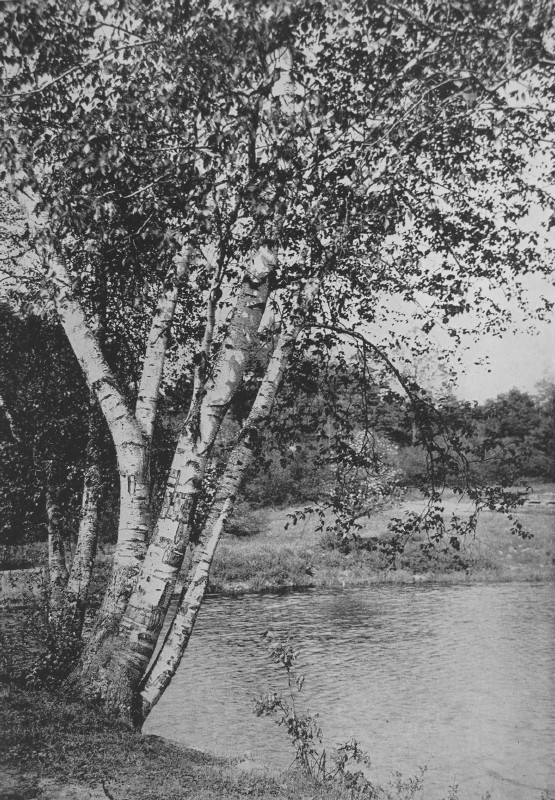 A SUMMER SHORE - NEAR BATH  AWAY DOWN EAST - DRESDEN 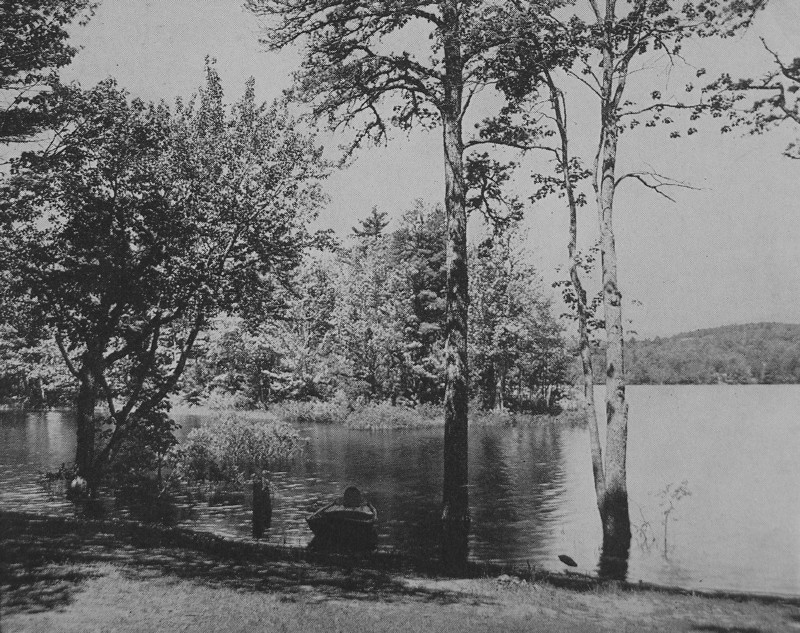 A CRYSTAL LANDING - GRAY 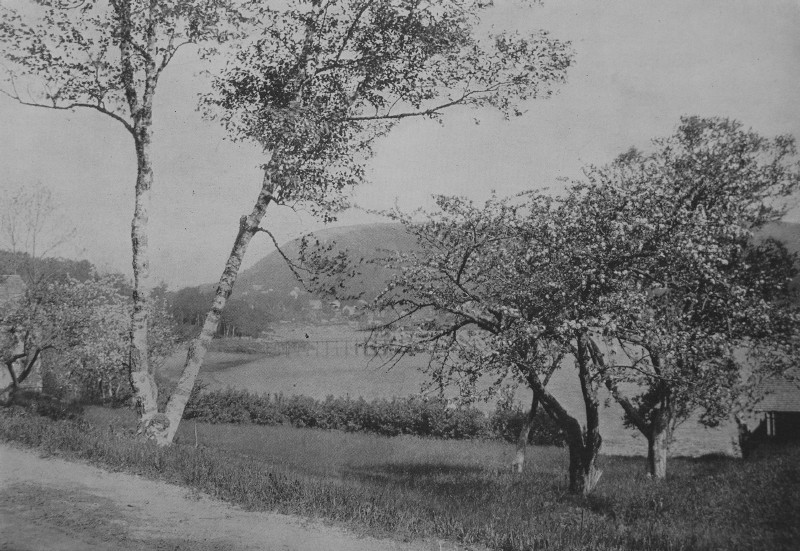 CAMDEN HARBOR 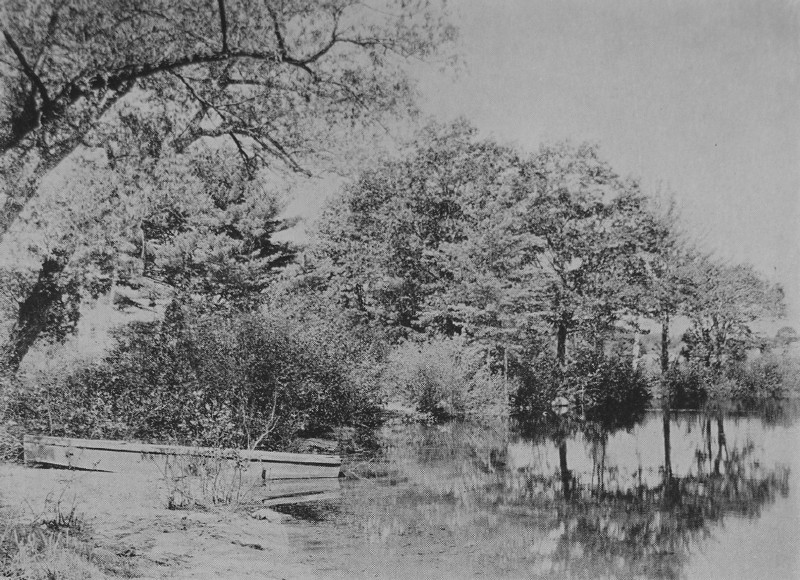 SABBATH DAY LAKE - NEW GLOUCESTER 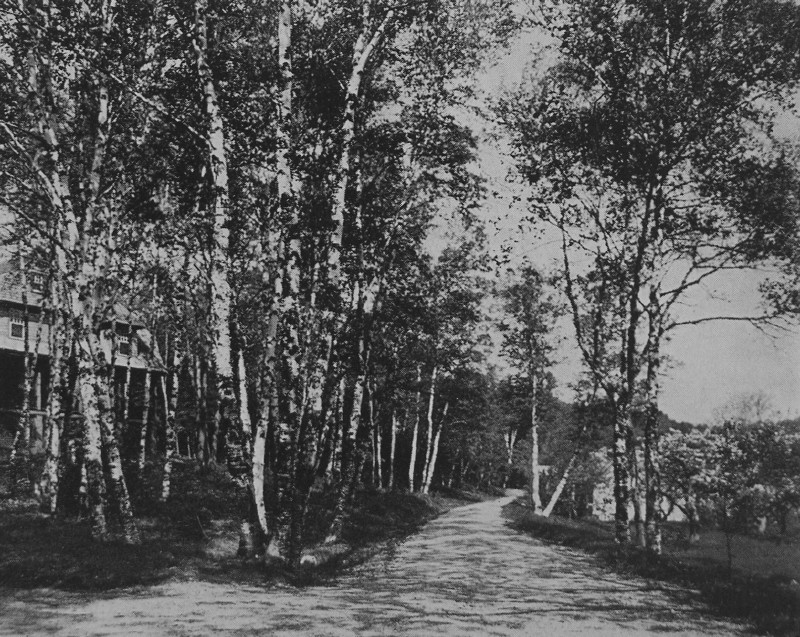 BIRCHES IN SUNLIGHT - CAMDEN 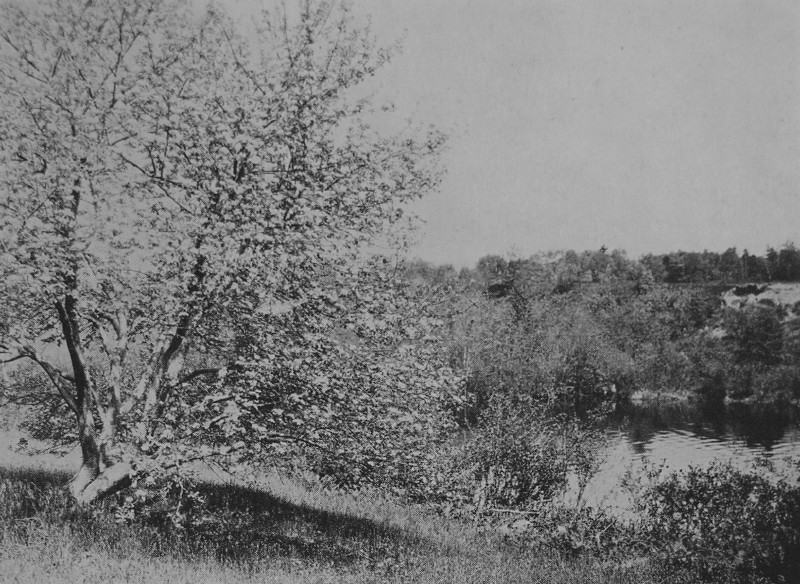 A SABATTUS SHORE 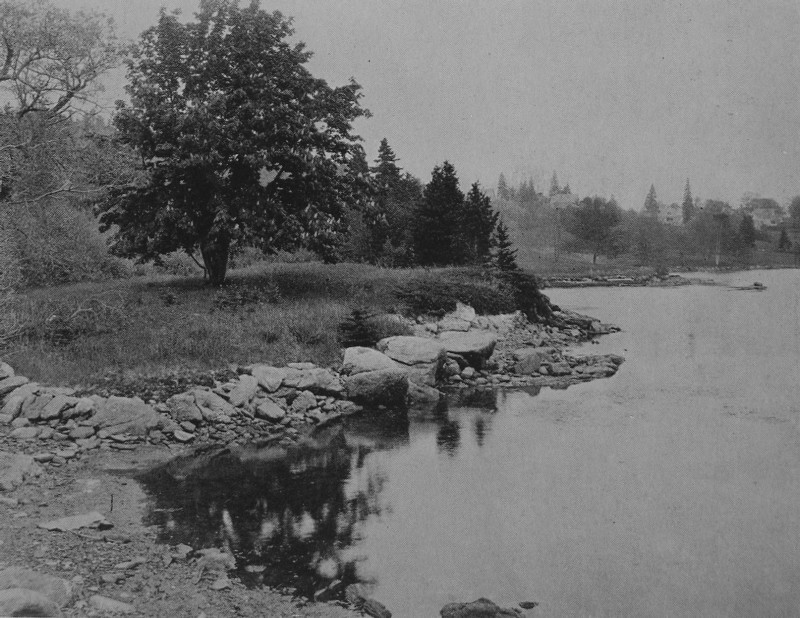 THE RIPPLES' EDGE 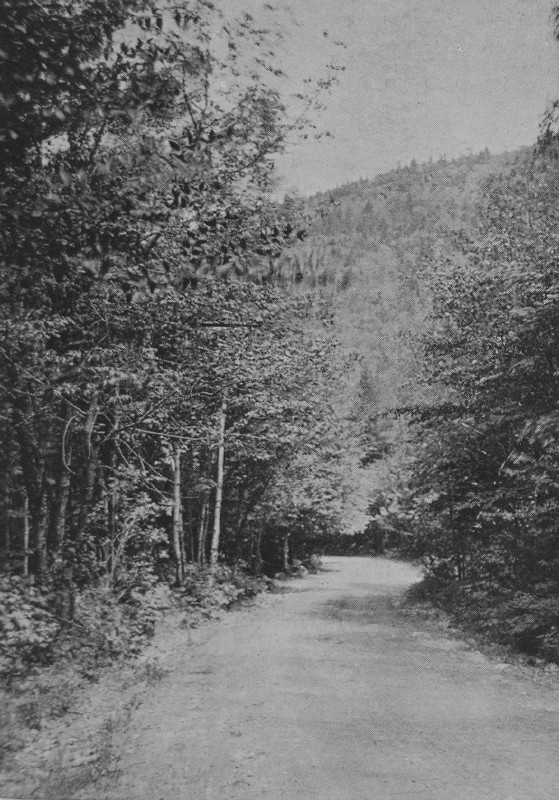 UNDER THE CREST - CAMDEN 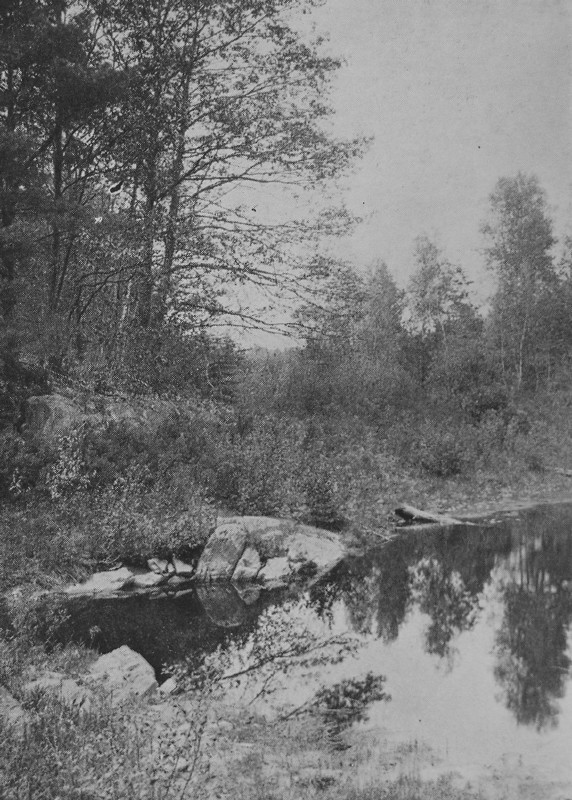 AT LEISURE - CAMDEN  THE BOAT UNDER THE BOUGH - WISCASSET  A DIVING POOL, CRYSTAL LAKE - GRAY 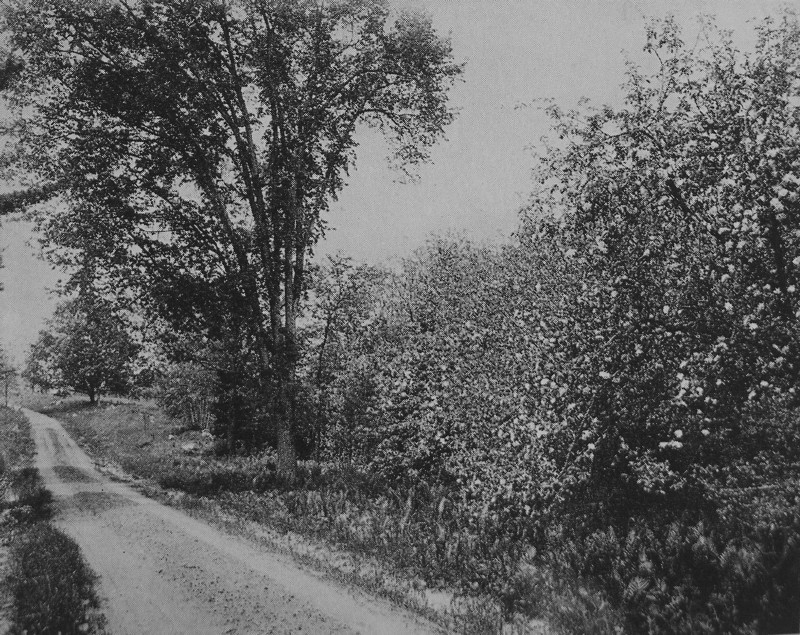 FERN, BLOOM AND ELM - DRESDEN There is
something
back of forest fires that lies in uneducated natures. There is an
abundant
number of city people who seem to recognize no property rights in the
country.
They freely break down lilacs and the blossoming boughs of apple trees,
and
make use of the land wherever their fine fancy prompts. They could own
this
earth on which they tread for a very small investment. They prove,
however,
that their interest is not serious, and their admiration not honest.
The love
of nature is shown by the respect we show to her. To build a fire
against a
dwelling is not nearly so dangerous as to build a fire in the forest,
unless a
site with wide areas of clean earth surrounds the blaze. A forest fire
is like
a bitter word, left to rankle. when we consider the slowness of the
growth of a
character or a tree, it is no less than a miracle that we have good men
and
good trees. The Indians were accused of setting fires for various
purposes, in
the old days. Sometimes they wished to drive out game; sometimes they
wished to
encourage the growth of grasses or shrubs for deer and moose to browse
upon.
But since they used little timber, in their crude civilization, they
were not
as blameworthy as the present day barbarian who is destroying the
ancient
forest. Nothing is more unsightly than a burned-over tract. Nothing is
more
delightful than an undisturbed woodland. We are slowly learning that to
call a
man civilized does not make him so, and that the savagery of the
twentieth
century is far more dangerous, and in many instances more complete,
than was
the case before the days of Columbus. If we can't be lovers of beauty,
let us
at least try to be decent in ourselves. Fire does not belong to us by
any right
that we can claim as human beings. Nothing belongs to us. We take
everything on
sufferance. Even when we buy, we simply enter into an agreement with
another
man to quit his claim to the thing we purchase. Back of his claim is no
indefeasible
right. We may get our deeds from the Indians, but judgment on us for
our use of
the lands is decided by an older and mightier power. Twenty thousand
acres have
just been burned over in Maine, as we write. The state pays a great sum
to its
fire fighters, and in addition it suffers the loss of its forests and
its
reservoir of waters. That a characterless man should handle carelessly
the
mystery of fire is one of the anomalies of civilization. The hackmatack,
or
American larch, is one of the anomalies among trees. Though a conifer,
it is
not evergreen. The irregularity of its branches gives it an airy grace.
We have
not seen elsewhere than in Maine rows or clumps of hackmatack planted
as
windbreaks or decorative trees. Occasionally one sees a whole forest of
them,
usually on the lowlands. The hemlock,
much
despised in the early times, is so common that it is now much used as a
cheap
lumber, though it affords shaky boards. In its growth, it is often
graceful.
One of its important values is its bark, used for tanning, though the
oak bark
is better, and modern chemical methods are likely to supersede both
barks, and
leather itself, for that matter. The poplar is another common wood, cut for pulp or for spools. We were accustomed to think of it as a somewhat plebeian tree. Now, however, when we see the hard woods, such as maple and birch, passed over as valueless in the back forests, we must revise our opinions. It is said that a quarter of a million cords of pulp wood will be floated this year, down one branch of the Penobscot river. It is surprising to see how well trained the sticks are, keeping generally in the middle of a strong current, where the stream is of fairly uniform width. In the broads, however, and where the eddies form, it circles about several times before it is willing to proceed. In times of high water, tossed up on the bank, it remains, and in parts of the river shows a definite line of numerous sticks on the sands or the crags. From these positions it is cleared every year or two, in the autumn, by a process called "picking the river." Beginning at the highest and most remote tributary streams, every stick is started on its way by the deft river man, and followed down until millions of feet are gathered at the final point. The life of the river men, while dangerous, is not so much so as it appears, to one who watches them from the bank, leaping from log to log. PEMAQUID FORT The workers at
this
trade acquire a love for it. In fact, it would seem that the more
dangerous an
occupation out of doors, the more ready are men to go into it. This
promises
well for a hardy race. So long as men are ready to take up dangerous
callings,
which nevertheless give health and quick, iron muscles, it indicates
that the
spirit of manhood is not on the decline. The life of the camp has
developed a
type. The food is of the best, but woe to him who finds fault! By the
discipline of the camp, the critic or the cook must go, and it is not,
as a
rule, the cook. The quantity of food consumed is enormous, since the
activity
of the lumberman and the cold weather require great interior fires. We
have
heard of one foreman who rapidly took on board nine fried eggs, as the
introduction to his breakfast. In addition to the meats, of which there
are all
sorts, and all good, there was at least one instance when rich baked
beans were
also served for three hundred and sixty consecutive meals. This is the
total
number of meals during which the cook-house was in operation. Do not
imagine
there was a change in diet. In putting up dinners for the men who go
too far to
return for them, there were, in this camp at least, always added a
dozen
cookies, besides the dessert. A cook informed me that such trifles do
not
count, and that he never knew a cooky to be returned.
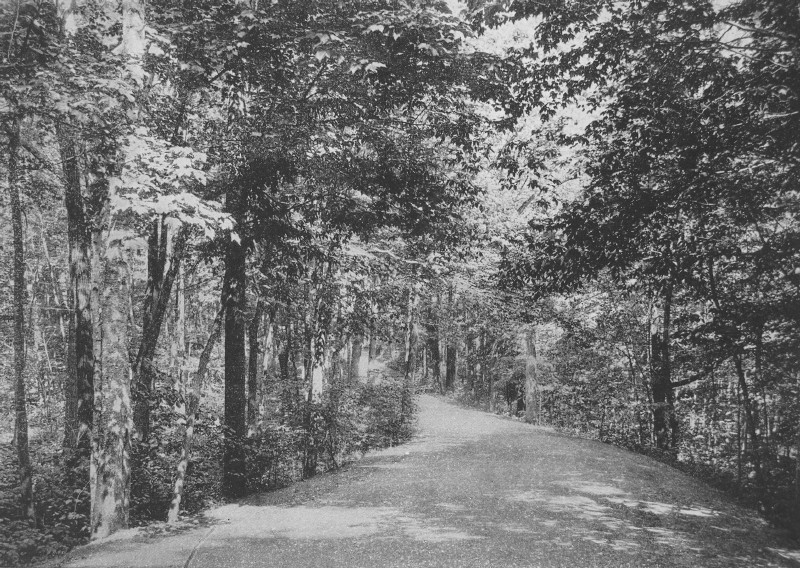 POLAND SHADE 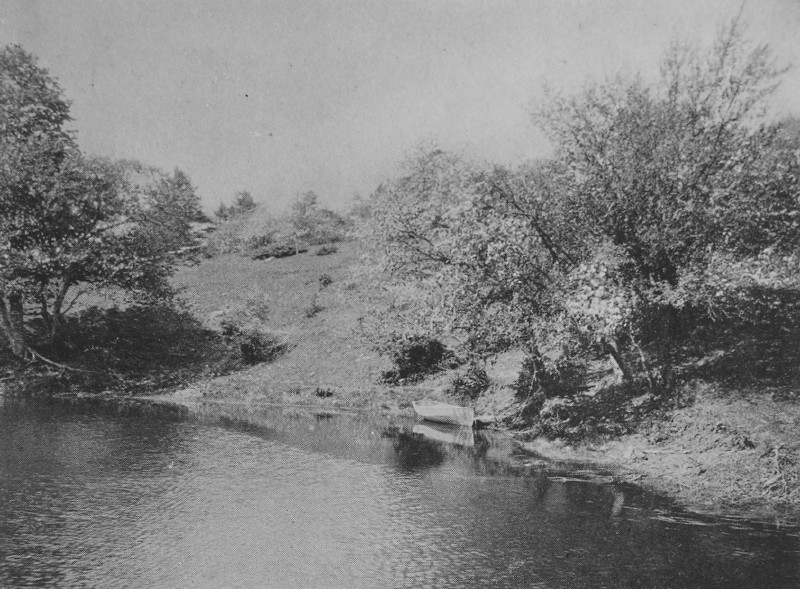 THE RIPPLES' EDGE - WISCASSET 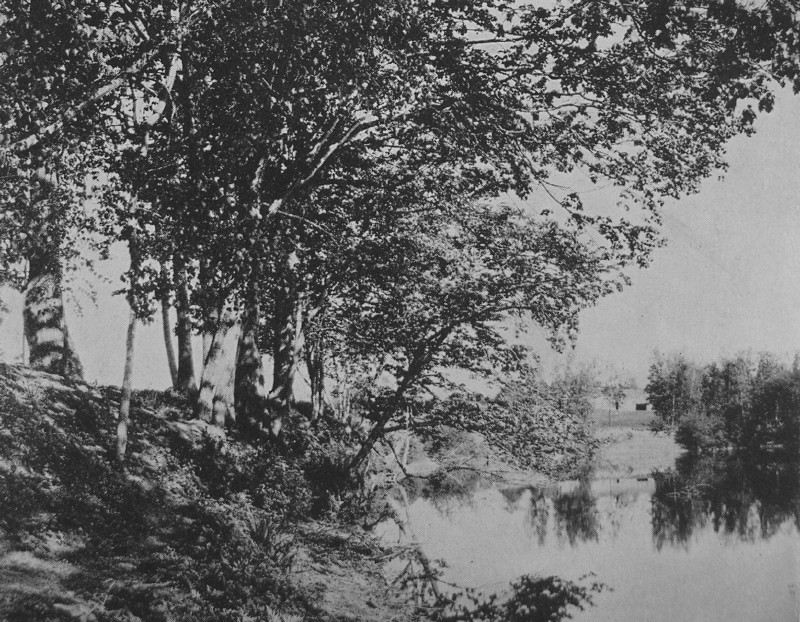 THE SWIMMERS' DELIGHT - DANVILLE 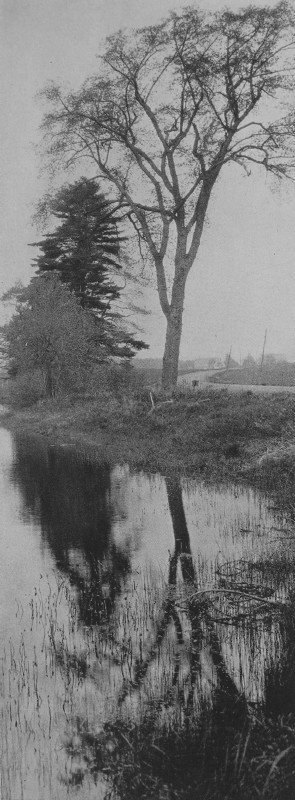 TOPSHAM BANKS  MEETING THE TIDE - ROCKPORT  THE ROADSIDE TROUGH  INTO THE VALLEY - EDGECOMB ORNAMENTAL AND FRUIT TREES THE maple and
the
birch and the elm are the usual trees along the walls. The elms, though
not so
old as those of Massachusetts, are scarcely less majestic. In many
towns they
form a wonderful canopy over the streets. In the smaller places, as
Randolph,
Dresden, Union, and a hundred others, their great trunks lend dignity
and
character. The maple is a
favorite, largely, probably, because of its quick growth. It requires
but a few
years to cast a dense and broad shade. This very early maturity,
however,
betokens an early decay, as we have elsewhere pointed out. The basswood
is in
some neighborhoods a favorite. The buttonwood scarcely occurs in Maine.
The birch tree,
with its velvety pink bark, of the sort growing in northern latitudes,
flourishes in Maine very extensively, though there are regions where we
see it
seldom. When at its best, it has an individual charm unlike any other
species.
we have been happy in finding at York and Damariscotta, in New Vineyard
and
other quarters, a large number of delightful specimens or groups of
these
trees, which light up the twilight roadsides and form an artistic
marker. The
great wood piles of white birch are a feature of the farmhouses. At
Lincolnville, the children of a family built them a fort in the
woodpile, while
the buttresses were round sticks with their white rims, and the guns
were large
and fine salmon-colored logs. The bright eyes of the defenders peeped
shyly
over their ramparts. we left them as dangerous persons, who would
captivate our
hearts and keep us in bondage if we remained long. The beech woods
of
Maine, always winning us by their fine trunks, supply another source of
fire
wood. The oak is not so common nor so majestic as we find it in
Connecticut.
The distinctive and frondlike foliage of the locust appears here and
there,
and, of course, the horse chestnut is highly honored. The nut trees of
Maine
are confined mostly to the beech and a few sporadic specimens of other
varieties. Beach nutting was the usual excuse in the autumn for a
frolic in the
woods. The cherry
trees of
Hallowell, of the great blackheart variety, were long a well-known
product. The
wild cherry remains as a pest of the wayside, since it is a dangerous
and
favorite host for worms. Since the wood is of some value for furniture,
a
campaign ought to be begun against all wild cherries. This tree is
quite
distinct from the sour cherry of Pennsylvania, so much cultivated for
its
fruit. The choke
cherry,
so appropriately named, is another product, almost as dangerous as
poison to
the small boy. It remains for some genius to find a use for its fruit. The roadsides
of
Maine are beautiful in the autumn with the elderberry, growing by the
stone
walls and ancient fences. Wild blackberries grace the spring and enrich
the
autumn. The upland pastures and roadsides are well spattered with
raspberry
bushes.
THE love for apple blossoms, which has become so evident in the writer's life, seems never satiated. This year has been wonderful for the fullness and general diffusion of these pearl-white, myriad petals that fill the air with fragrance and the eye with delight. To this we must add that by rough computation, carried on throughout the spring, we determine that at least nine out of ten orchards in Maine are neglected, and more than half of them grossly neglected. The apple is alive only through its own persistence. There is no general sorting or rating of the fruit. The Maine apple is equal to any that grows and superior to all that grow south of it, hard and luscious even into the spring, when we so much crave its deliciousness. It exists on tolerance, without half a chance. Here and there, as in Monmouth, there is serious attention paid to it. we have in mind an orchard that once made its owner rich, but that is dying now that he has died. The juniper and the evergreen, beautiful but fatal, are springing up to choke out the forlorn trees, many of them not past a rich usefulness. If one-half of the skill or enthusiasm that we see in California were devoted to the Maine apple, it would be grown in the greatest profusion and would make its qualities widely known. Emphasis should be placed on the keeping qualities of these apples. It would be easy to prove, by the fruit itself, how superior it is to that brought from the west. We have seen in northern Maine cities, in the fruit shops, great quantities of mealy, tasteless western fruit, that sold purely for its skin-deep beauty, while the unsought, but delectable native fruit could not be had except on insistent demand. The crying need of Maine, at the present time, is first a belief in its own products, and then the fostering and exploitation of them. Great areas in Maine, where the soil is somewhat light or gravelly, are perfectly adapted for successful apple culture. Strangely enough, we note many apple orchards on heavy clay soils. Some farms have no other soil. If apples will flourish under such conditions, how much more might they be a source of delight and profit on those farms which at present yield a meager living. Along the shores of Maine, and all about the lakes, apples thrive. They seem to delight in slopes above water. THE SPARHAWK HOUSE HALL, KITTERY We have been traveling in Elysium for months this year. The blossoms have told their silent story most eloquently. They came late, but lasted long, and many a tree seemed bent on outdoing itself. At least, it was bent! Never have we seen so many great branches sweeping the ground. Redolent, multitudinous, aromatic, the delight of the hillside, the fence corner, the gable of the shed, and the roadside, it has filled us with joy. The apple blossom is the most attractive form of prophecy. If asked if we believe in prophecy, we answer, yes. Shall not the intelligent men of Maine protect these blooms from blight, and meet half way this most luxuriant and beautiful overture of God to men? THE SPARHAWK DOOR, KITTERY Among the
hundreds
of blossoms, the pictorial record of which we have made, we find
ourselves in a
delicious uncertainty which to choose. We have therefore laid the
abundant
feast before the reader. Eat, and be filled! We must, however, say that
the
view of a gable decorated by blossoms at Edgecomb, where we looked down
upon a
bay, was among our finest experiences. Again, where we looked up at the
old
block-house through wild-apple blossoms, we felt that charming
combination of
youth and age, of which the world never tires. In an orchard in Camden,
while
we were making adjustments for a picture, we found a wood snake twined
about
the post of the camera, and within striking distance of our eyes. This
is the
only instance in our experience of a serpent's interest in art! The
poor,
harmless creature, he has gone the way of all snakes! The pyramidal form of the pear tree and its early bloom give variety and a longer term to the white billows of the spring. This year also, for the first time, we have found the wild cherry of use, peeping over its diffused abundance from the shores of Boothbay. We have also made our initial studies of effective horse-chestnut blooms, and have recorded the dogwood in its luxuriant and widespread brilliance.
THE steadiness of the Maine winters, in spite of exceptional January thaws, provides good sleighing. The modern method of rolling the roads affords a very much better surface than we used to enjoy. In some parts of the state, as on the fine route from Greenville to Ripogenus Dam, a sprinkler is sent over the road after it is rolled. The result, so far as the ease of gliding is concerned, can hardly be understood by those who have not had a recent sleigh ride. For sleigh riding is the king of winter sports, because it may be so generally enjoyed, and enjoyed for so long a period. We have shown two or three pictures in this work of ski jumping and snowshoeing, furnished us by the courtesy of the Maine Publicity Association. The modern tendency in sports seems to be for a few to enjoy them by actual participation, while the many stand about in the cold. In this respect we think the old way was better. Then everyone participated. It would have been a poor creature, subject to raillery, if not contempt, who would in those days have stood at the side of the road while the coasters went by. Any girl is pretty in the winter, with her pink cheeks. It would have been an exceptional girl for whom no place was made on the double-runner. THE SPARHAWK HOUSE PARLOR, KITTERY While perhaps
we
strain a point if we reckon gathering maple sap as amongst winter
sports, we
nevertheless considered it in that light in our childhood. Two
pictures, one
showing the sap house, and another the gathering of the sap, were also
furnished us by the same source. Undoubtedly it
is a
good thing to induce city people to go into the country in the winter,
though
it should require no inducement, other than the splendid tonic of the
air, the
sparkling snow on the hills, and the winter festoons over the fence
rows and
the farm buildings. Any measure that tends to call the attention of the
public
to winter as an asset, rather than a liability, is commendable. Maine
offers
the only large area in the east open to settlement. Many persons from
northern
Europe settle in the Dakotas and contiguous states. In Maine they might
enjoy
the windbreaks supplied by the fine forests, and the ranges of hills.
They
would be certain of a crop, and would not require the weather bureau to
tell
them whether enough rain would fall. Maine has never called on the
outside
world for food. She has enough and to spare, and in sufficient variety,
so that
life is still agreeable on many thrifty Maine farms. We have this year
visited
such farms where optimism was a habit, and where plenty abounded. If
those
persons who sometimes go under the name of radicals, were to study the
methods
of the successful farmers in Maine, they would not require to press for
laws asking
farmers. bonuses. Maine is one of two states in New England where
farming is
still carried on extensively and seriously, with the idea of obtaining
one's
whole living from the land. Bangor is no colder than Burlington.
Probably the
thick blanket of winter snow in Maine is in part accountable for the
sweetness
of the corn which has given that product supremacy in the markets of
the world.
Everywhere, we think without exception, races who have made good where
cold
winters occur, were good races, in the sense that they possessed good
physique,
persistence, thoroughness, stability, and in general, admirable
characters. 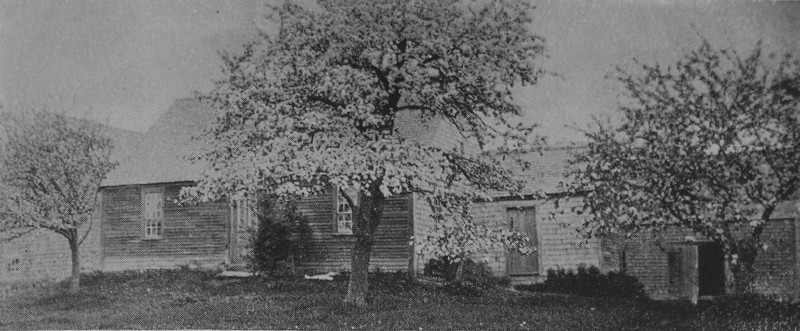 A DRESDEN RETREAT  FROM ANOTHER CENTURY - RICHMOND 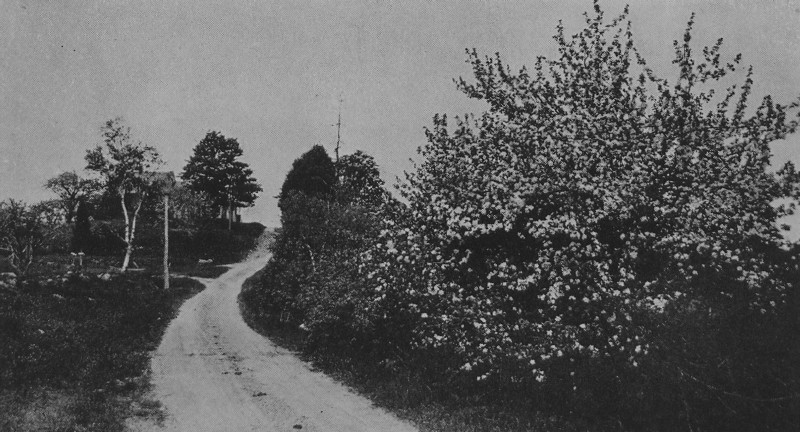 OVER THE HILL - DRESDEN 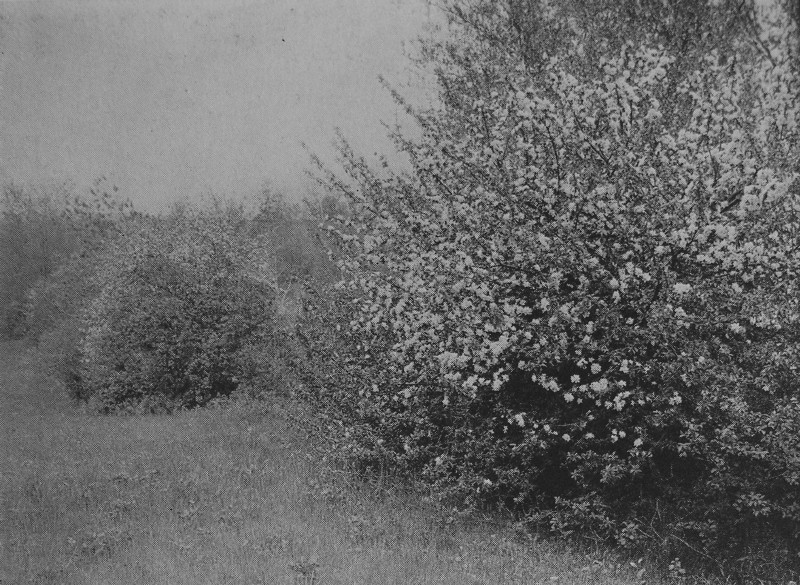 ALL JOY! - DRESDEN 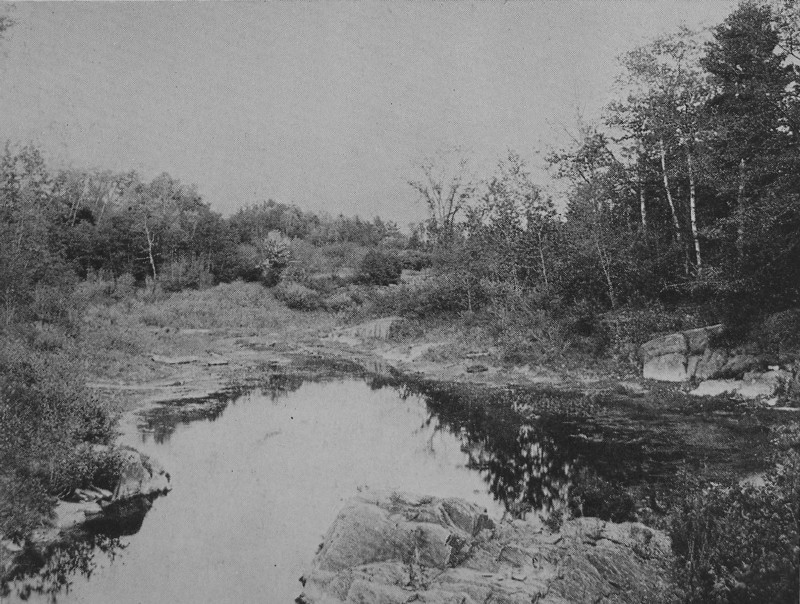 A WILDWOOD DELL - ALNA 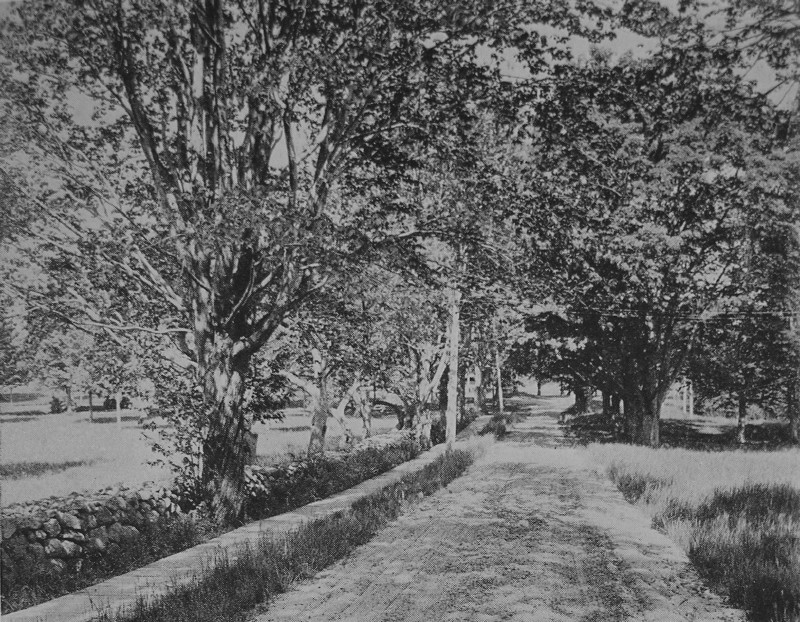 POLAND SHADOW PLAY 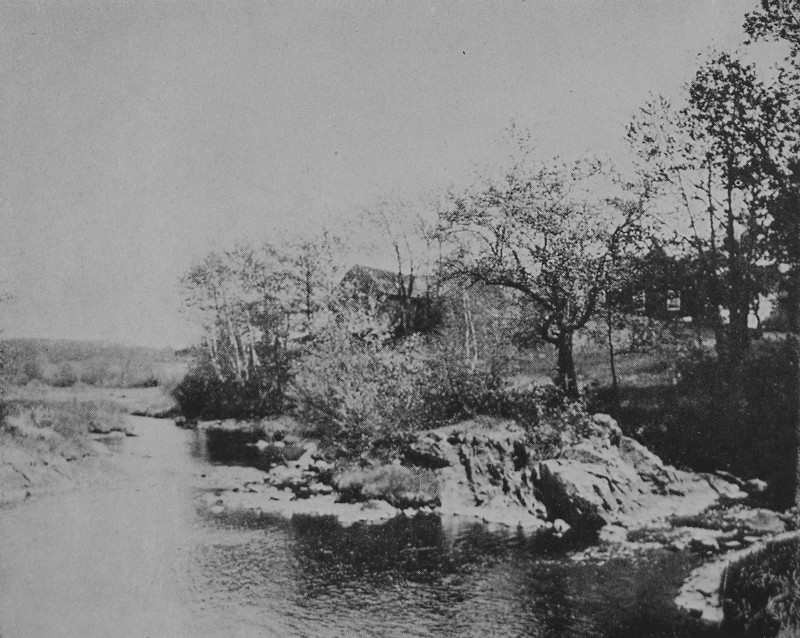 INLET AND OUTLET - BIDDEFORD POOL 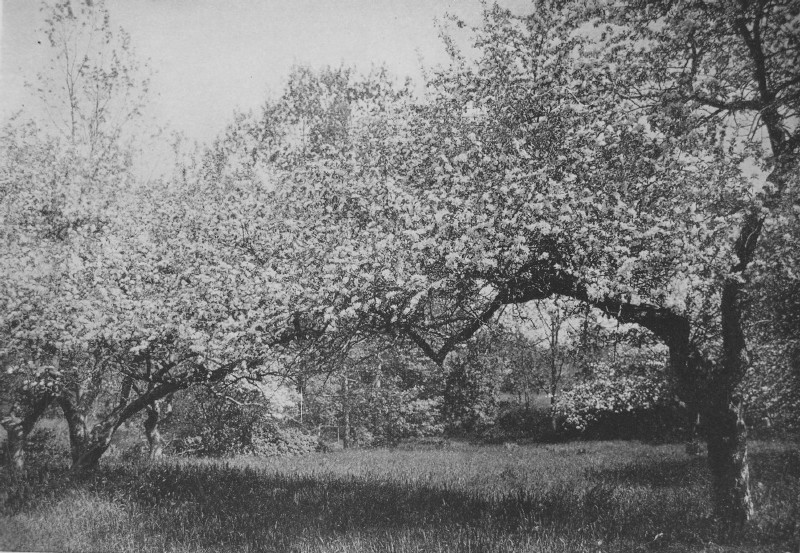 A
CAMDEN ARCH
ATTRACTIVE
MAINE
VILLAGES EXCURSIONS
ending
at the point of departure from many Maine
villages and small cities may be made very attractive.
From Fryeburg one
is under the shadow of the White Mountains. A route north past upper
Kezar Lake
is altogether beautiful. Roads easterly skirt fine streams, and roads
southeasterly pass through evergreen woods. Fryeburg is of the right
size, and
its people are of the character, to give pleasure in such summer
acquaintances
as may be formed. The Saco, in its quiet stretches, is nowhere more
beautiful
than from the bridge nearest the village, though there are two other
bridges
somewhat farther away which show the stream in much beauty. A great
boulder in
this town has the reputation of being one of the largest known. At
Lovell's
Pond, also, is the site of an old Indian battlefield. The pleasantest
summer of
the author's youth was at Fryeburg, how many years ago we don't care to
say. We
will say, however, that a week's exploration over the old haunts this
summer
afforded all the joy of the past. Bethel is a
village
quite given up to summer visitors, and abounding in attractions. The
Androscoggin shows us here many fine curves. The stream which flow into
it are
even better. One of these we regard as almost the most beautiful of our
Maine
discoveries. The location of Bethel, accessible from many other
interesting
points, must continue to foster its popularity. Farmington has
for
many years enjoyed distinction for its quieter surroundings near the
upper
Kennebec and the Sandy river. Its intervales mark the appropriateness
of its
name. Its old and notable school supplies an atmosphere agreeably
classic. Guilford is a
large
village close to some of the most distinguished lake scenery in New
England.
Its river also is not without many windings, punctuated by the grace of
elms. Foxcroft-Dover
is
in a region more completely given up to open land farming. It is a good
type,
if we may use the pronoun "it" of a twin settlement, where a certain
amount of manufacturing in a market town diversifies the life of the
people. Newport is a
meeting place of roads and the base for visiting the beautiful shores
of
Sebasticook Lake. It is prepared to entertain visitors who go away with
pleasing
impressions of an open landscape without great inequalities of
elevation. The
same may be said of Skowhegan and Phillips. Phillips, however, is not
far from
distinguished mountain scenery. Saddleback attains the respectable
elevation of
four thousand feet, and Mt. Abraham is almost as lofty. Wilton, with
its pond
and its background of hills, is a village which, together with Weld,
also
supplied with a fine body of water, may attract the guest. Indeed, both
these
towns have that beauty of which we never tire, the conjunction of
mountain and
lake. Mt. Blue, near weld, was for long a favorite resort in blueberry
time, so
much so that in our childhood we supposed that blueberries were named
for the
mountain! Belgrade has
become
a famous lake center. Its proximity to Augusta and Waterville has been
availed
of locally, and visitors from afar swarm in the region. The town of
Rome, which
was once synonymous for rocks, now has a broad highway through it from
Augusta
and Waterville to Farmington, and its sharp hills have become a joy.
The lakes
of Belgrade have so many intricate windings and touch one another in
such
unexpected fashion, that those who sail upon them would require years
to feel
at home, and even then losing the sense of newness, they acquire the
sense of
familiarity which is even dearer. The lakes of
Winthrop have long been a favorite resort from the cities of the
Kennebec and
from Lewiston and Auburn. The road to these lakes in spring or autumn,
whether
in blossom time or in the time of painted leaves, is equally enjoyable.
Cornish, while
mainly perhaps thriving by its industries, and as a local market, is a
very
pleasing headquarters on the Saco, for excursions, in which may be
included
Sebago Lake. Everybody knows the water centers of Bridgton and Naples,
and the
features of Poland are too distinctive to require elaboration. we have
been
happy in finding pictures of fine woodland drives in this vicinity. We have already
mentioned, though our minds constantly revert to, the charms of
Wiscasset and
Damariscotta. If we were to speak of a red letter day in Maine, perhaps
the
most enjoyable we have had for years, we should say it was a spring day
in and
about Wiscasset. There is a little ice pond near the village, whose
borders are
studded with blossoms, at intervals, producing most artistic effects.
Then the
drive to Dresden, returning through Alna, supplied us with delightful
scenes. We have
discussed
already the villages of Camden and Castine, and the attractions of Bar
Harbor. Belfast is a
little
city whose country roads, though not all very smooth, are dotted by
cottages
and skirted by farms and decorated with lakes and streams so as to hold
our
attention. Eastport and
Calais
should be sufficient with their waters and their inland drives to the
lakes and
streams behind them, to hold attention for a long time. Princeton and
its
lakes, among the largest in Maine, when all attendant smaller lakes are
taken
together, is the center of a very important and fascinating district. Aroostook County, in Houlton, Presque Isle, Fort Fairfield, Caribou and Fort Kent, has villages which are headquarters for a study of a fertile and magnificent farming district. Here, in a rich soil and in a strong way, the people of Aroostook carve their fortunes from their broad lands. In Schoodic Lake, and Grand Lake, at the southeast corner of the county, and in the very extensive Eagle Lakes at the northern end of the county, canoeing at its highest estate calls to the water lover. In fact, the Eagle Lakes offer perhaps a longer unbroken water route than any other lake route in the state. All this district is yet capable of very much larger development. It holds virgin forests and farm lands, so extensive, and watered by so many fine streams, that this county alone is worth, and perhaps ought eventually to receive, a special volume. Possibly if we unite Aroostook with northern Penobscot and the whole of Piscataquis, and the greater part of Somerset counties, we should have a district unrivaled in the world for its lake attractions. The villages from which one could set out are somewhat remote from one's destination. But these villages are largely experienced in supplying the needs of the traveler. They are not yet beautiful in themselves, not having had yet the age and necessary development to secure mellowness. They should be thought of more as points of departure, just as western villages are regarded.
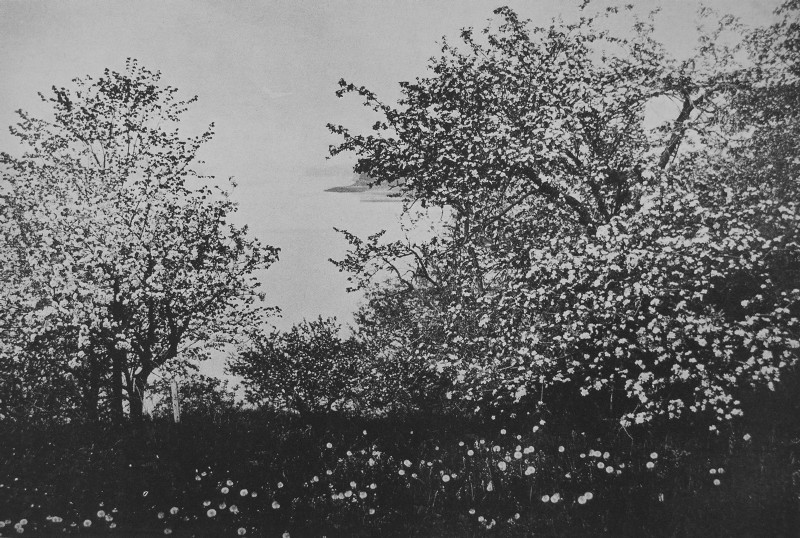 APPLE AND DANDELION FLUFF - NORTH EDGECOMB 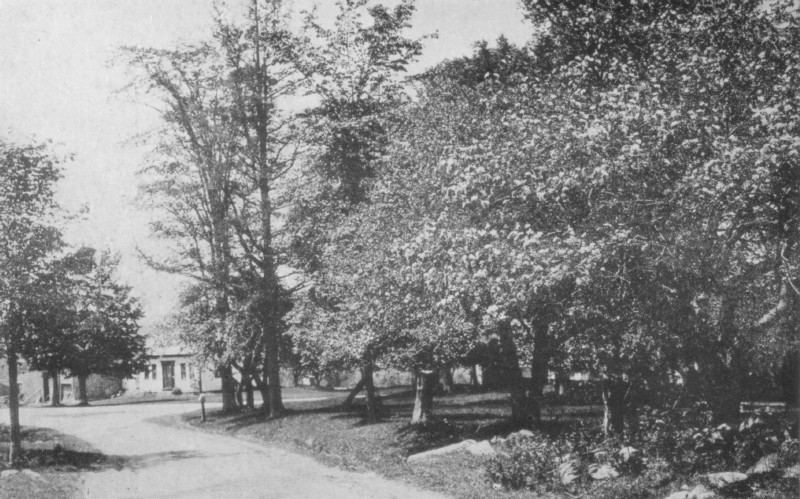 A MAINE CORNER - LINCOLNVILLE 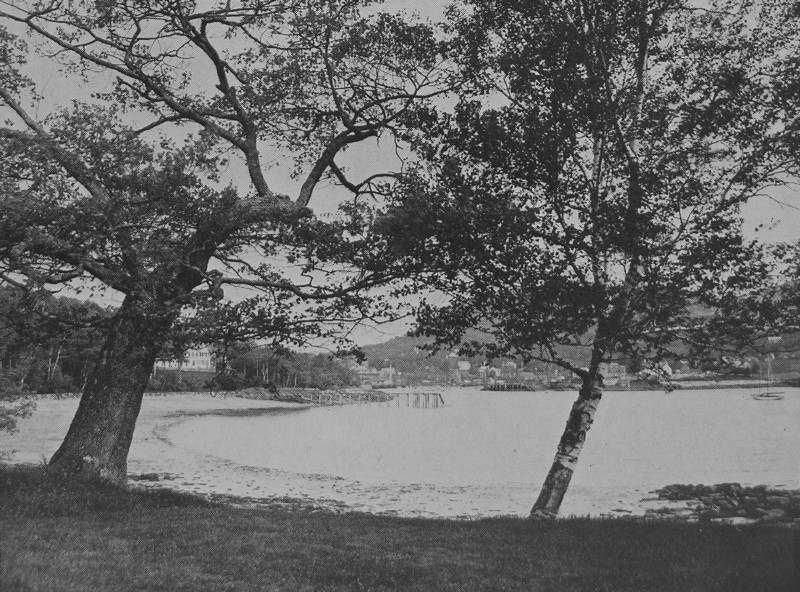 LEANING TO THE SHORE - CAMDEN 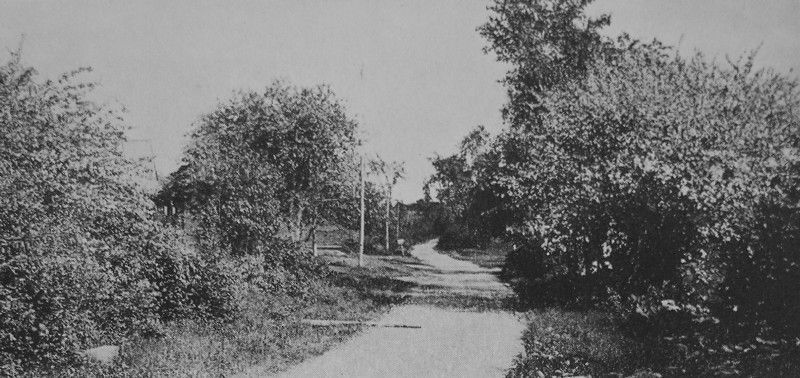 JEFFERSON BORDERS 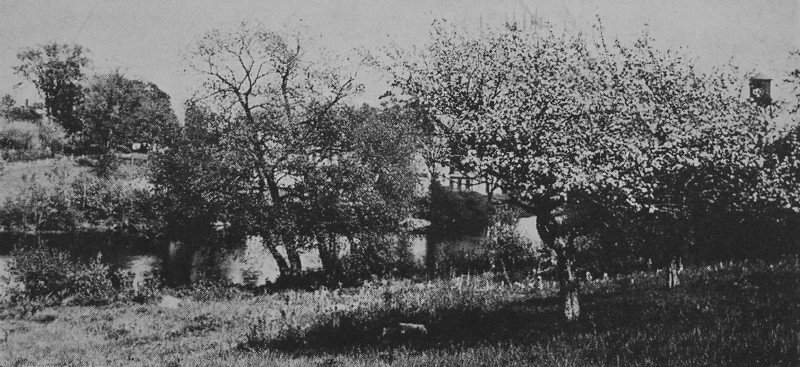 FAIR BANKS - LISBON  HIDDEN GABLES 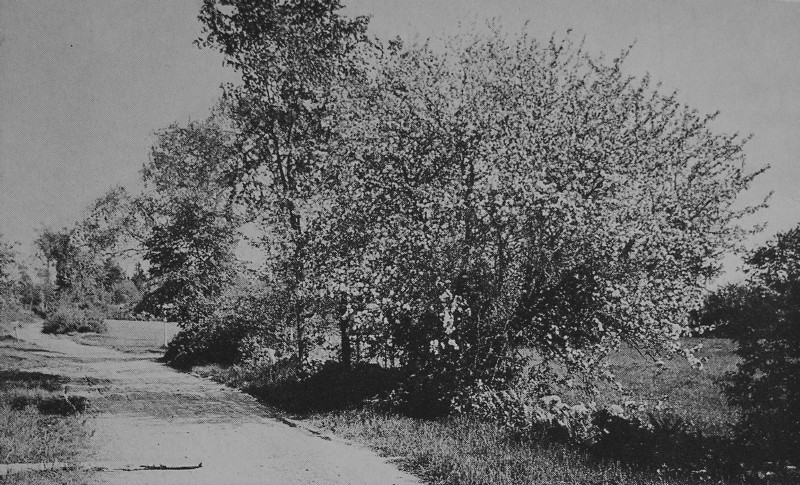 KENNEBEC BLOSSOMS - WHITEFIELD 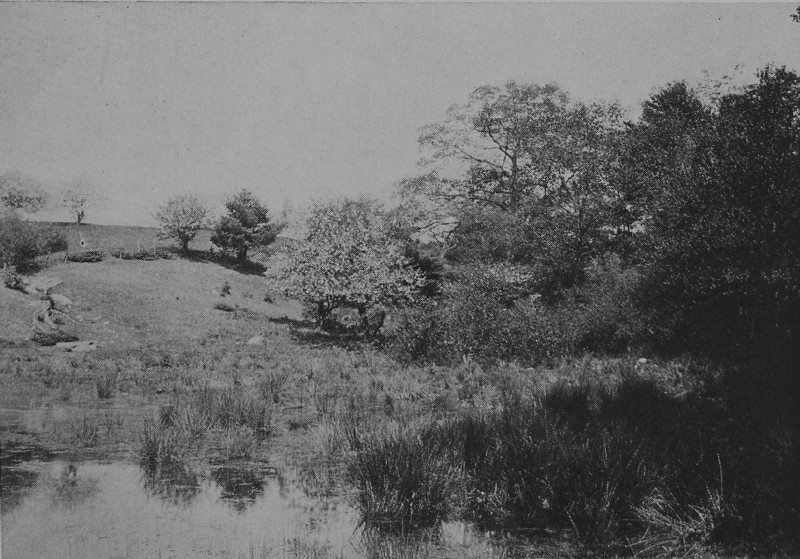 WHERE THE LAKE SHOALS - WISCASSET 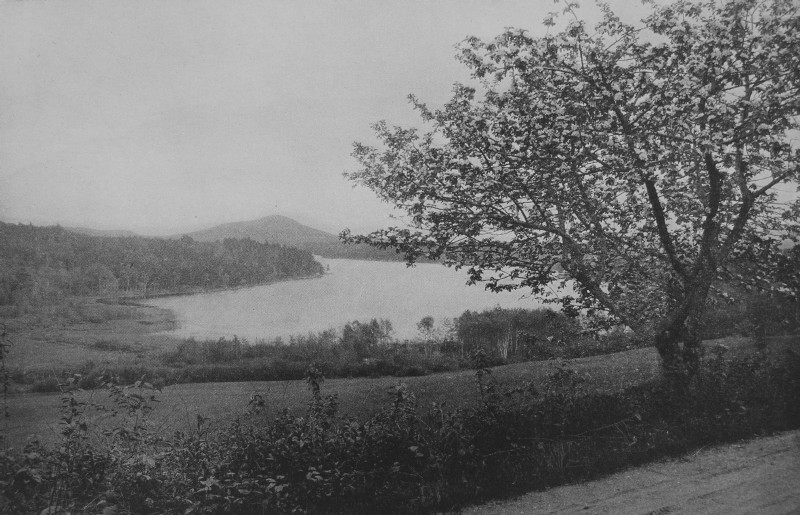 PITCHER POND - NEAR BELFAST 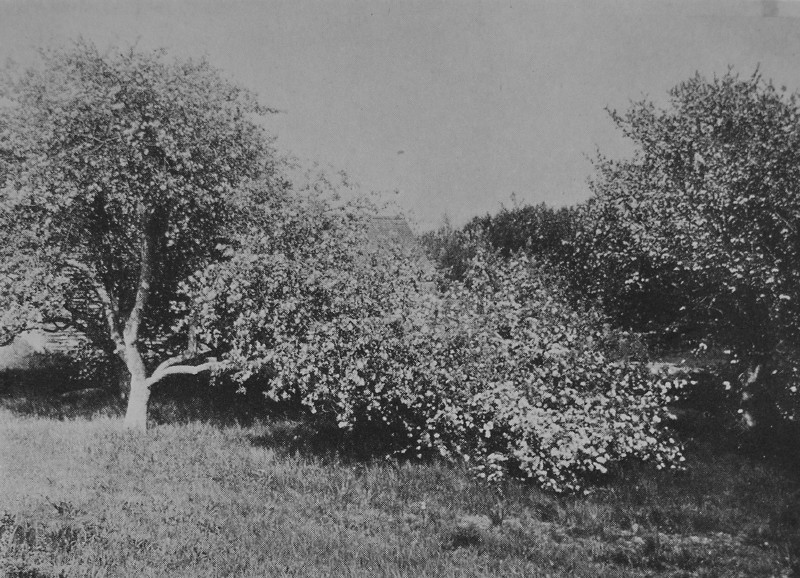 A BURDEN OF BEAUTY - ALNA 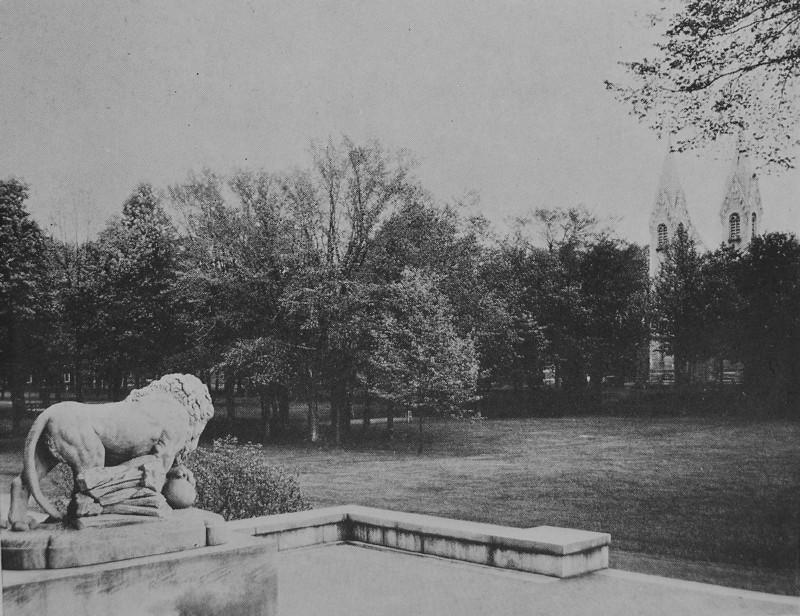 THE CAMPUS OF BOWDOIN 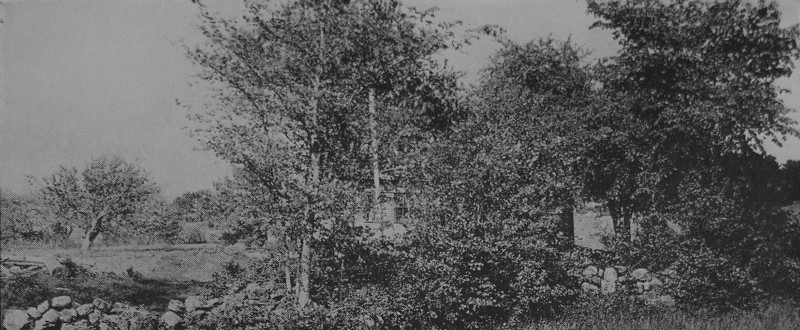 A RETIRING COTTAGE 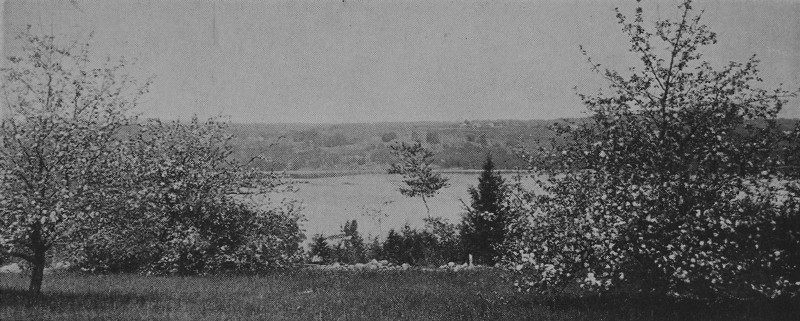 MARANACOOK 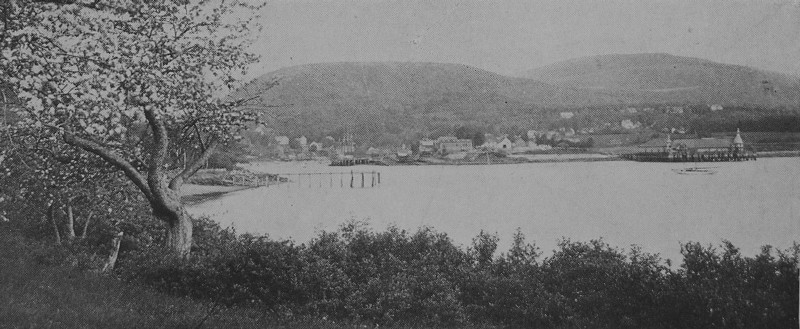 CAMDEN MOUNTAINS 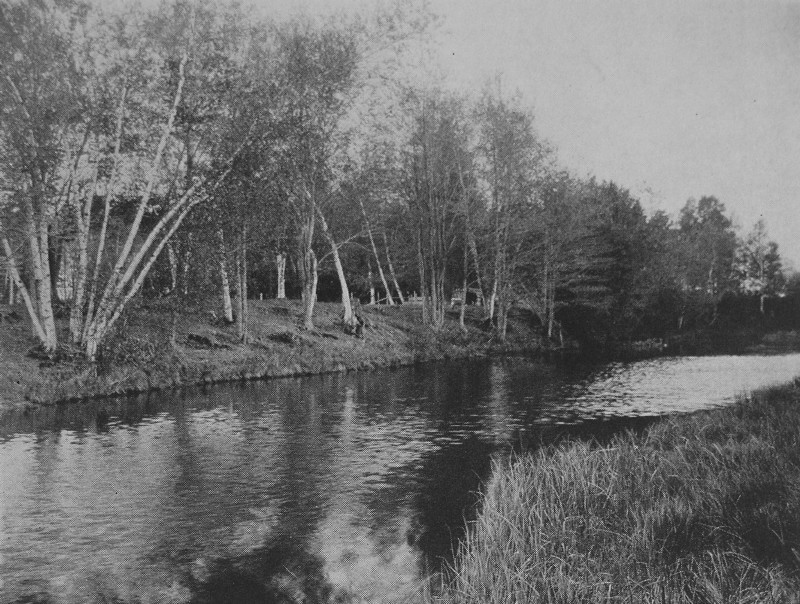 NINE SISTERS - TOPSHAM  MAINE IN SPRING - OXFORD COUNTY |